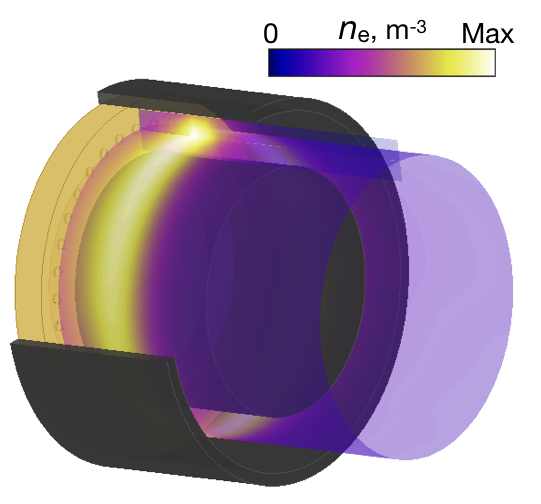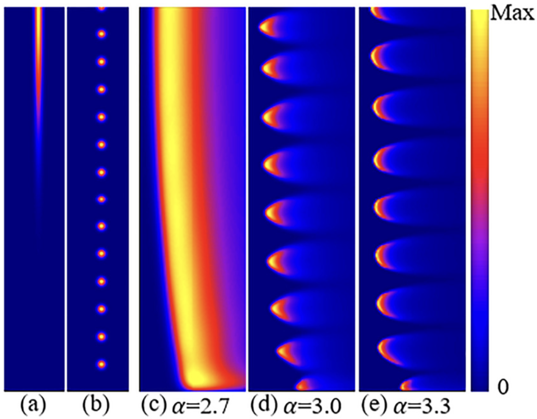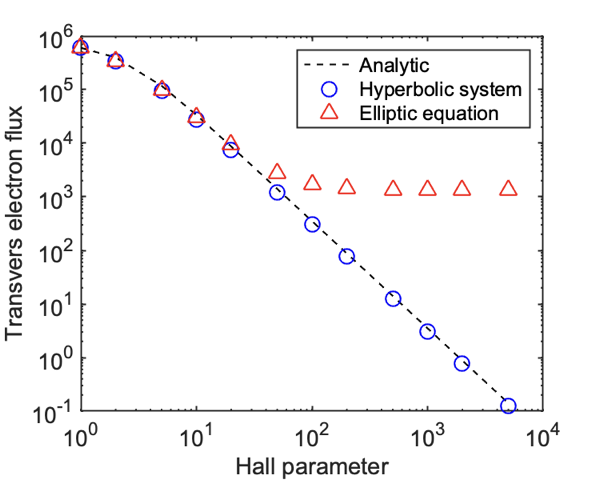Plasma Flow Simulation
Hall Thruster Discharge
|
Hall thruster designing has entered the phase of computer-aided-engineering (CAE), and high-fidelity simulation technology is indispensable for the development of high-performance thrusters. Owing to the axisymmetric geometry, the Hall thruster discharge has been conventionally simulated by axial-radial 2D models. However, recent studies have shown that the plasma turbulences/oscillations in the azimuthal direction have significant influences on the discharge behavior.
Our numerical simulation is featured by a self-consistent model that incorporates the azimuthal physics into the plasma transport description. The plasma oscillations are investigated by linear perturbation theories as well as kinetic and fluidic numerical simulations. The plasma transport characteristics obtained by the azimuthal oscillation analysis are reflected to axisymmetric plasma models for thruster performance predictions. We endeavor to make our numerical tool leading the world. |

|
Microwave/Laser Discharge and Detonation

|
Propagation mechanism of the microwave-supported detonation (MSD) and laser-supported detonation (LSD) is poorly understood. The propagation velocity of MSD and LSD cannot be explained by the aerodynamics of shock-induced detonation. In addition, several modes and structures are observed in the high-power microwave and laser discharges depending on the intensity and frequency (wavelength) of the incident beam.
Our goal is to establish a theory for the MSD and LSD. Hypothesis is that the discharge (ionization wave) is preceding the shock wave. Our simulation has reproduced the “fishbone” structure observed in MSD plasma. Now we are focused on the model refinement to predict the propagation velocities of MSD and LSD accurately. Numerical modelings for these unique phenomena are expanding the frontier of plasma physics. |
Numerical Scheme Development
|
Plasma flow simulation handles the electron fluid in addition to ion and neutral atom flows. A strong anisotropy appears in the electron fluid when magnetic confinement is used. Solving the anisotropic diffusion problem of magnetized electron fluid is challenging owing to several numerical difficulties. In fact these numerical difficulties have been the bottleneck in the numerical simulations for plasma devices that use magnetic confinement.
We are developing a new scheme for magnetized electrons that uses a hyperbolic equation system, instead of the standard diffusion (elliptic) equation. This scheme mathematically converts a diffusion equation to a hyperbolic equation system, and the hyperbolic system is computed by using CFD techniques. We found the numerical difficulties in the anisotropic diffusion problems are avoided in the hyperbolic system approach. Further, this approach has been successfully applied to a practical simulation of the Hall thruster. |

|
